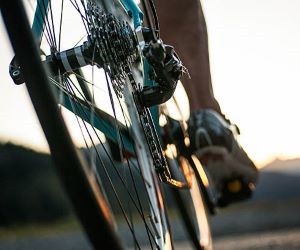Explore the best cycling and bike touring routes in Raleigh, from scenic greenways to wooded trails and smooth city rides—perfect for a vacation on two wheels.
HOW DO I PREPARE FOR MY FIRST MOUNTAIN BIKE RACE?
Preparing for your first mountain bike race can feel overwhelming—balancing physical training, technical skills, and mental readiness. Unlike casual trail rides, racing demands preparation across multiple dimensions, from bike setup and nutrition to pacing strategies. This article guides you step by step through the essentials of building confidence and performance for your debut race.

Building fitness and technical skills
Fitness and technical handling are the foundation of mountain bike racing. Riders must balance endurance with bursts of explosive power while navigating roots, rocks, and steep climbs. Unlike road cycling, mountain biking requires sharp bike-handling skills combined with cardiovascular conditioning to adapt to constantly changing terrain.
Training for endurance and power
Begin with a structured training plan that mixes long rides for endurance with interval workouts to build sprint capacity. Hill repeats and short, high-intensity intervals prepare your body for steep climbs and sudden accelerations typical of race conditions. Aim for at least 8–10 weeks of consistent training before race day, progressively increasing intensity and volume.
Long endurance rides to build aerobic capacity
Interval sessions for explosive power
Hill climbs to replicate race demands
Strength training to support handling and stability
Technical skill development
Mountain bike racing involves more than fitness—it’s about control. Practice cornering, braking, and descending on varied terrain. Learn to shift gears efficiently before climbs and anticipate obstacles. Skills sessions on local trails, pump tracks, or technical loops build confidence and efficiency. The more familiar you are with your bike’s handling limits, the better prepared you’ll be for unpredictable race environments.
Building both endurance and skill ensures you won’t just survive the race—you’ll enjoy the challenge while staying safe.
Optimizing your gear and bike setup
The right equipment setup is critical for performance and safety. Unlike casual rides, racing exposes weaknesses in gear choices and bike maintenance. Preparing your equipment well in advance avoids race-day mechanical issues and improves efficiency.
Bike preparation
Ensure your bike is race-ready by scheduling a full tune-up. Check brakes, suspension, drivetrain, and tires for wear. Tire selection should match course conditions—knobbier treads for muddy trails, faster-rolling options for hardpack. Adjust suspension for a balance between comfort and efficiency. A reliable, well-maintained bike is your best ally against mechanical setbacks.
Inspect and tune brakes for responsiveness
Check drivetrain components and replace worn parts
Adjust suspension settings for terrain
Choose tires that suit course conditions
Gear and accessories
Protective gear is essential. A well-fitted helmet, gloves, and glasses provide safety and comfort. Many riders use padded shorts for longer races and hydration packs for easy access to fluids. Carry a basic repair kit—spare tube, pump, and multi-tool—to handle mid-race issues. Familiarize yourself with your gear during training rides so race day feels seamless.
Attention to detail in setup gives you the confidence to focus on performance instead of worrying about breakdowns.
Race day strategies and mindset
Even with training and gear dialed in, success depends on execution during the race itself. Managing nerves, pacing correctly, and fueling your body are key elements that determine whether you finish strong or struggle halfway through.
Nutrition and hydration
Start race day with a balanced meal rich in carbohydrates and moderate in protein. Hydrate early, and continue sipping fluids throughout the race. For events lasting more than 90 minutes, carry gels or energy bars to maintain glycogen levels. Avoid experimenting with new foods—stick to what you’ve used successfully in training.
Eat a carbohydrate-focused breakfast 2–3 hours before start
Sip fluids regularly to prevent dehydration
Use gels, chews, or bars during longer races
Avoid unfamiliar nutrition products on race day
Pacing and mental approach
New racers often burn out early by starting too hard. Instead, pace yourself—ride at a sustainable effort that allows strong finishing. Break the race into manageable sections, focusing on one climb or descent at a time. Mentally, stay adaptable; crashes, mechanicals, or unexpected conditions happen. A calm, problem-solving mindset often separates finishers from those who abandon.
Finally, embrace the experience. Your first race is as much about learning as competing. Observe tactics, connect with fellow riders, and soak in the atmosphere. Every race builds resilience, making you faster, smarter, and more confident for the next challenge.
By combining structured training, dialed-in equipment, and a focused race-day plan, you’ll not only complete your first mountain bike race—you’ll set the stage for a lifelong passion in competitive cycling.
YOU MAY ALSO BE INTERESTED






